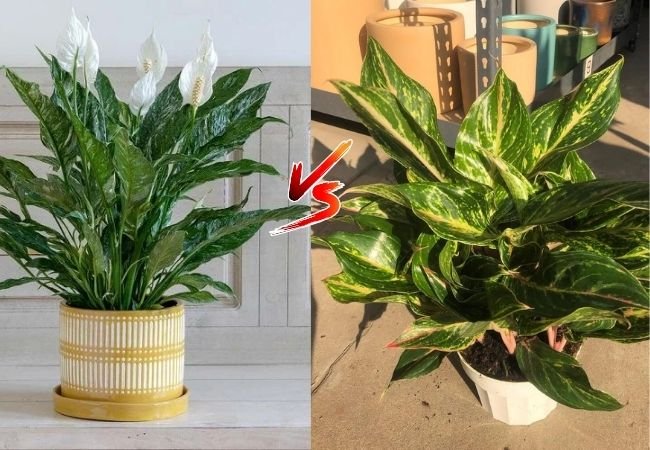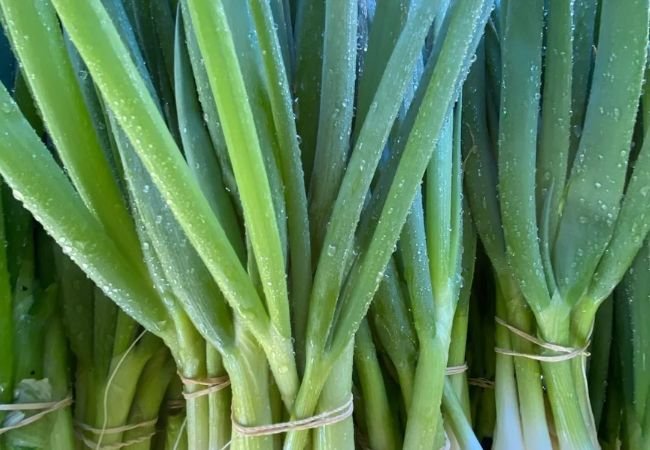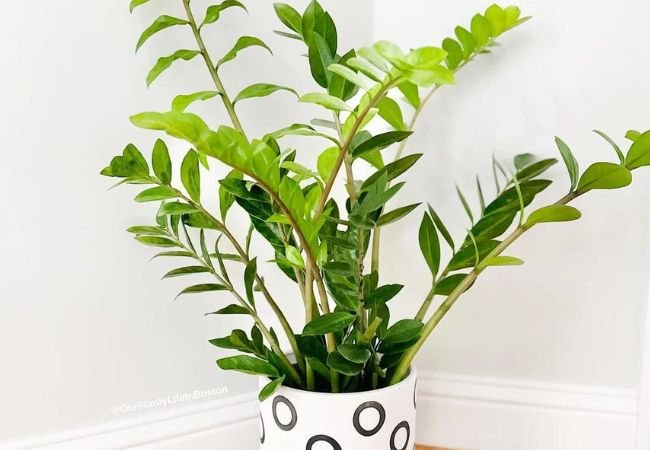Explore the differences between Peace Lily and Chinese Evergreens. Learn about their unique features, care requirements and which plant is best suited for your home or office environment.
Are you looking to add some greenery to your home or office? Peace Lily and Chinese Evergreens are both popular choices. But which one is right for you? This guide will help you understand the differences between these plants and choose the best one for your space.
Introduction to Peace Lilies and Chinese Evergreens
Both Peace Lilies and Chinese Evergreens are well-liked indoor plants. They’re known for being easy to care for and looking great. But they have some key differences that might make one a better choice for you than the other.
What is a Peace Lily?

Here is a completed chart with detailed information about the Peace Lily:
| Category | Details |
|---|---|
| Botanical Name | Spathiphyllum spp. |
| Common Name | Peace Lily |
| Plant Zone | 10-11 (can be grown as an indoor plant in cooler zones) |
| Sun Exposure | Low to bright indirect light |
| Soil Type | Well-drained, peat-based |
| Watering | Regular, keep soil consistently moist but not waterlogged |
| Growth Habit | Upright, bushy |
| Height/Spread | 1-3 feet tall, 1-2 feet wide |
| Special Features | Glossy, dark green leaves with white spathes and yellow spadix, air-purifying qualities, low maintenance, popular indoor plant |
Peace Lilies are plants with dark green leaves and white flowers. They’re not actually lilies, but they get their name from their lily-like flowers. Peace Lilies are known for:
- Cleaning the air
- Thriving in low light
- Needing regular watering
What is a Chinese Evergreen?

Here is a completed chart with detailed information about the Chinese Evergreen:
| Category | Details |
|---|---|
| Botanical Name | Aglaonema spp. |
| Common Name | Chinese Evergreen |
| Plant Zone | 10-11 (can be grown as an indoor plant in cooler zones) |
| Sun Exposure | Low to bright indirect light |
| Soil Type | Well-drained, peat-based |
| Watering | Regular, allow soil to dry slightly between waterings |
| Growth Habit | Upright, bushy |
| Height/Spread | 1-3 feet tall, 1-2 feet wide |
| Special Features | Attractive, variegated foliage in shades of green, silver or red, low maintenance, tolerant of low light and neglect, popular indoor plant |
Chinese Evergreens are plants with colorful, patterned leaves. They come in many varieties with different colors and patterns. Chinese Evergreens are known for:
- Being very easy to care for
- Tolerating low light
- Needing less water than many plants
Appearance and Varieties
One of the biggest differences between Peace Lilies and Chinese Evergreens is how they look.
Peace Lily Appearance
- Leaves: Dark green, oval-shaped leaves
- Flowers: White, spoon-shaped flowers
- Size: Can grow 1-4 feet tall and wide
Peace Lilies don’t have many different varieties. Most look similar, just varying in size.
Chinese Evergreen Appearance
- Leaves: Oval or lance-shaped leaves with various patterns
- Colors: Green, silver, red, pink, and more
- Size: Usually 1-3 feet tall and wide
Chinese Evergreens have many varieties with different looks:
- Silver Bay: Silver and green leaves
- Red Siam: Dark green leaves with pink or red edges
- Emerald Beauty: Solid green leaves
For more info on Chinese Evergreen varieties, check out the University of Florida’s guide.
Light Requirements
Both plants can handle low light, but they have different ideal light conditions.
Peace Lily Light Needs
- Can grow in low light
- Prefers medium, indirect light
- Too much direct sun can burn leaves
Chinese Evergreen Light Needs
- Very tolerant of low light
- Grows well in medium, indirect light
- Colored varieties need more light to keep their patterns
Watering Needs
Watering is one of the biggest differences between these plants.
Peace Lily Watering
- Likes to stay moist
- Needs watering when top inch of soil is dry
- Droops when it needs water
- Can handle occasional overwatering
Chinese Evergreen Watering
- Prefers to dry out between waterings
- Water when top 2-3 inches of soil are dry
- Can handle some drought
- Sensitive to overwatering
Humidity and Temperature
Both plants like warm, humid conditions, but they have different tolerances.
Peace Lily Humidity and Temperature
- Likes high humidity
- Does well in bathrooms or kitchens
- Prefers temperatures between 65-80°F
- Can handle brief periods below 60°F
Chinese Evergreen Humidity and Temperature
- Tolerates average home humidity
- Likes temperatures between 60-75°F
- Can handle brief periods below 55°F
- Doesn’t like cold drafts
Soil and Fertilizer
Both plants need well-draining soil, but their fertilizer needs differ.
Peace Lily Soil and Fertilizer
- Use a well-draining potting mix
- Fertilize every 6-8 weeks during growing season
- Use a balanced, water-soluble fertilizer
Chinese Evergreen Soil and Fertilizer
- Prefers a loose, well-draining potting mix
- Fertilize lightly every 3-4 months
- Use a balanced, water-soluble fertilizer at half strength
Learn more about indoor plant fertilizers from the Missouri Botanical Garden.
Growth Rate and Size
These plants have different growth patterns and mature sizes.
Peace Lily Growth
- Moderate growth rate
- Can reach 4 feet tall and wide
- Often stays smaller in indoor conditions
Chinese Evergreen Growth
- Slow to moderate growth rate
- Usually stays under 3 feet tall and wide
- Grows outward more than upward
Air Purification
Both plants are known for cleaning indoor air, but in different ways.
Peace Lily Air Cleaning
- Removes many common indoor pollutants
- One of NASA’s top air-purifying plants
- Especially good at removing ammonia
Chinese Evergreen Air Cleaning
- Removes several indoor air pollutants
- Not as powerful as Peace Lily, but still effective
- Continuous air cleaning ability
Toxicity
This is an important factor if you have pets or small children.
Peace Lily Toxicity
- Toxic to cats, dogs, and humans if eaten
- Can cause mouth irritation and digestive issues
- Keep away from pets and children
Chinese Evergreen Toxicity
- Mildly toxic to cats and dogs
- Can cause mouth irritation if chewed
- Less dangerous than Peace Lily, but still keep away from pets
For more info on plant toxicity, visit the ASPCA’s toxic plants list.
Propagation
If you want to make more plants, here’s how each one grows.
Peace Lily Propagation
- Easily divided when repotting
- Split the plant into sections with roots
- Replant each section in its own pot
Chinese Evergreen Propagation
- Can be propagated by stem cuttings
- Cut a stem with a few leaves
- Root in water or moist soil
Pest Resistance
Both plants are relatively pest-resistant, but they can still have issues.
Peace Lily Pests
- Resistant to most pests
- Can sometimes get aphids or mealybugs
- Treat with insecticidal soap if needed
Chinese Evergreen Pests
- Very pest-resistant
- Might occasionally get mealybugs or spider mites
- Treat with neem oil or insecticidal soap if needed
Choosing Between Peace Lily and Chinese Evergreen
Are you looking to add some greenery to your home or office? Peace Lilies and Chinese Evergreens are both popular choices. But which one is right for you? This guide will help you understand the differences between these plants and choose the best one for your space.
Now that you know the differences, how do you choose? Consider these factors:
- Light: If you have very low light, choose Chinese Evergreen
- Watering: If you tend to overwater, Peace Lily might be better
- Appearance: Want flowers? Choose Peace Lily. Want colorful leaves? Go for Chinese Evergreen
- Size: For smaller spaces, Chinese Evergreen usually stays more compact
- Pets: If you have curious pets, Chinese Evergreen is slightly safer
- Air cleaning: For maximum air purification, choose Peace Lily
The Right Plant for You
Both Peace Lilies and Chinese Evergreens are great indoor plants. They’re both easy to care for and look great. The best choice depends on your specific needs and preferences.
If you want a plant that flowers, cleans the air well, and can handle occasional overwatering, go for a Peace Lily. If you want a colorful, very low-maintenance plant that can handle neglect, choose a Chinese Evergreen.
Remember, the best plant is one that fits your lifestyle and that you enjoy caring for. Happy planting!
For more gardening tips and plant care guides, visit usagardenhub.com







3 Comments on “Peace Lily vs. Chinese Evergreen : Key Differences and Choosing the Right Plant”